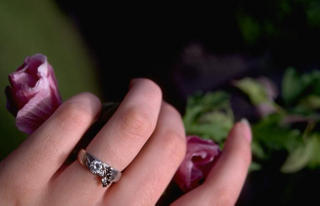 District large group speech competition is just around the corner here in Iowa, and one of the categories is television Newscasting. Students are to produce a 12 to 15 minute newscast where they deliver state, national and international news. The newscast also is to include weather, sports, an original 30 or 60 second commercial and a 500 word special feature. The students have to take ownership of this project, because they are the ones writing the scripts and running the equipment.
District large group speech competition is just around the corner here in Iowa, and one of the categories is television Newscasting. Students are to produce a 12 to 15 minute newscast where they deliver state, national and international news. The newscast also is to include weather, sports, an original 30 or 60 second commercial and a 500 word special feature. The students have to take ownership of this project, because they are the ones writing the scripts and running the equipment.Of course, some of the larger schools in Iowa have their own editing facilities or even their own TV studios. In order to help all schools compete on a more even footing, Prairie Lakes AEA helps out by letting students use our facilities.
Today, we had a group of students from a nearby school come in to shoot their TV News for speech contest. We started at about 9am by going over their script, blocking out which cameras will be live when each news story is being presented, and generally looking for problems and challenges in the project.

A new feature this year was our first attempt to use a chromakey in order to allow the weathercaster to stand in front of a computer generated weather map while doing the weather. That in itself was a challenge, as our lady weathercaster had to go shopping at the last minute for clothing that shot well on-camera.
The actual shooting started about 10:30am. The house lights were turned off and studio lights turned on. Two students sat at the anchor desk, other students ran the cameras, the video switcher, the audio mixing board and the computer with our CG graphics and text. One student ran the Kron editing appliance, where we fed the "on air" video and audio signals and would later edit down the project to the final cut we'll use.

After a last minute check of everyone involved, we "rolled tape" and a young student stepped in front of the camera with the clapboard.
"Scene 1, Take 1!" And with that, she snapped the clapper on the clapboard and stepped aside, while the speech coach gave a countdown.
"Coming in 5...4...3..2..1" With that, she gave a "throw cue" to the news team.

During the day, we taped perhaps 65 segments, ranging in length from a couple of sentences to a page or so. There were multiple false starts, blown takes, giggles, mispronunciations and times when someone lost his or her place in the script. No matter how frustrated we were, everyone kept a positive and supportive attitude. We all were there to work and have fun with this project.

Finally, we finished shooting at 3pm. Most of the crew then left for a late lunch at McDonalds, while one student and I started finding the correct takes of each scene and assembled them together. Later, the students will videotape a special feature or two and edit them into the video for the final product.








